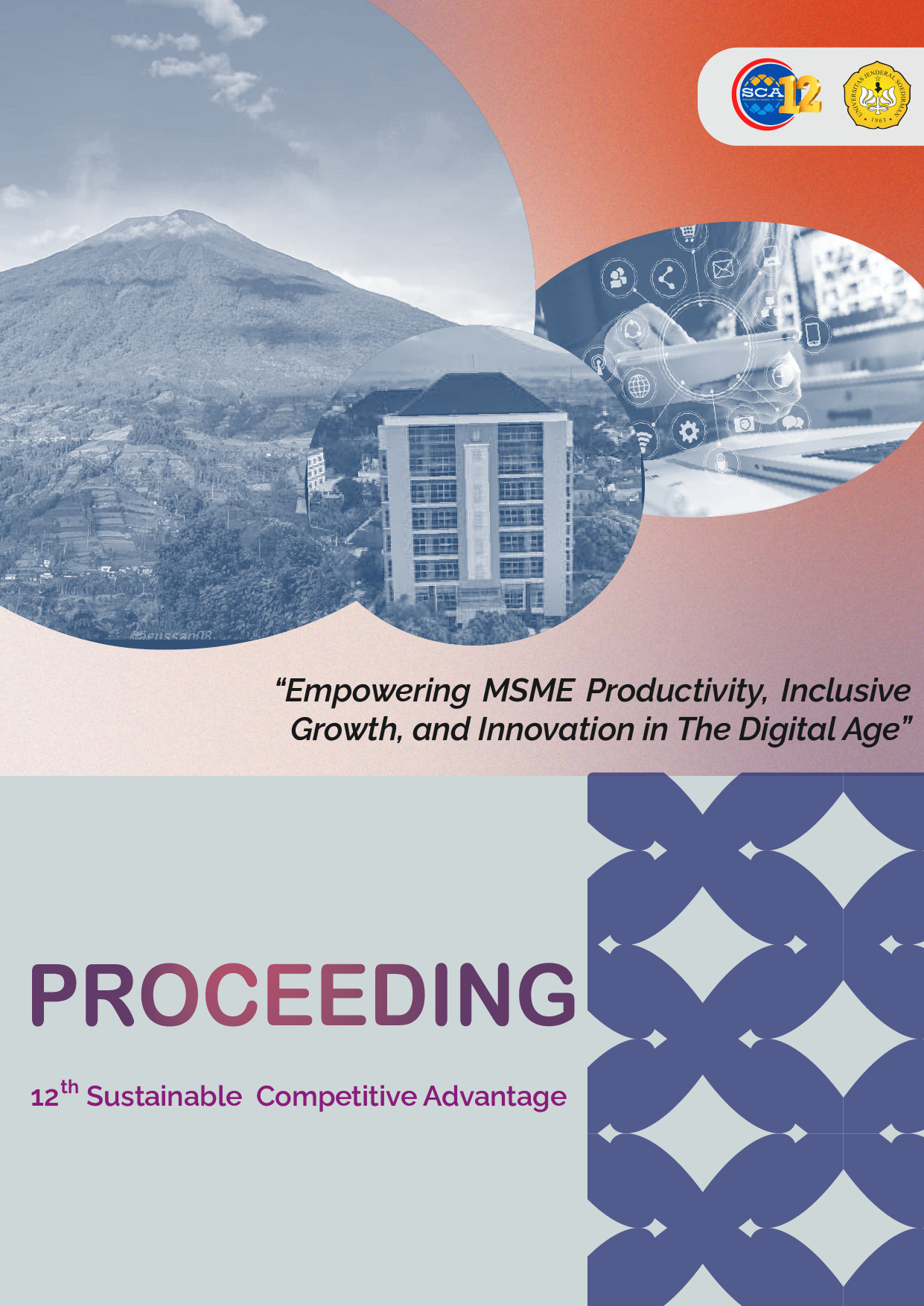Paternalistic Leadership and Employee Creativity to Realize Public Innovation
Abstract
One of the factors that drives innovative behavior among employees is their leadership style. Many innovations have been made to support high quality service. The purpose of this paper is to identify her three elements of patriarchal leadership in which employee innovation influences public innovation mediated by employee creativity. The survey was conducted by government agencies in Banyumas Regency and Serang City. The results of this study are that paternalistic leadership and creativity have a significant impact on public his innovation. The method of distributing questionnaires to respondents and collecting data received responses from 99 out of 120 people who distributed them, which were shared with superiors and subordinates through Google Forms. Analysis in this study is by regression.
Keywords: Paternalistic leadership, Employee creativity, Innovation.
References
Amabile, T. M. (1983). The social psychology of creativity: A componential conceptualization. Journal of Personality and Social Psychology, 45, 357–376.
Amabile, T. M. (1988). A model of creativity and innovation in organizations. In B.M. Staw & L. L. Cummings (Eds.). Research in organizational behavior (Vol. 10, pp. 123–167). Greenwich, CT: JAI Press.
Amabile, T. M. (1996). Creativity in context. Boulder, CO: Westview Press.
Anderson, N., Potočnik, K., & Zhou, J. (2014). Innovation and Creativity in Organizations: A State-Ofthe- Science Review, Prospective Commentary, and Guiding Framework. Journal of Management, 40, (5), 1297-1333
Chen, X.P.; Eberly, M.B.; Chiang, T.J.; Farh, J.L.; Cheng, B.S. Affective trust in Chinese leaders: Linking paternalistic leadership to employee performance. J. Manag. 2014, 40, 796–819.
Cheng, B.S.; Chou, L.F.; Wu, T.Y.; Huang, M.P.; Farh, J.L. Paternalistic leadership and subordinate responses: Establishing a leadership model in Chinese organizations. Asian J. Soc. Psychol. 2004, 7, 89–117.
Colville, I., & Carter, M. (2012). Innovation and Change in Public Services. In L. Brown & S. P. Osborne (Eds.), Handbook of Innovation in Public Services.Cheltenham: Edward Elgar Publishing.
Damanpour, F. (1991). Organizational innovation: A meta-analysis of effects of determinants and moderators. Academy of Management Journal, 34(3), 555-590.
Farh, J.L.; Cheng, B.S. A cultural analysis of paternalistic leadership in Chinese organizations. In Management and Organizations in the Chinese Context; Li, J.T., Tsui, A.S.,Weldon, E., Eds.; Palgrave Macmillan: London, UK, 2000; pp. 84–127.
Fuglsang, L. (2006)‘A case study of service innovation in the Danish public library system: how the public sector can comfort innovation and entrepreneurship’, Paper Read at The 2006 ASEAT Conference on Innovation in Services, The Institute of Innovation Research (IoIR), The University of Manchester, 15–17 June 2006.
Hill, K.G., & Amabile, T.M. (1993). A Social Psychological Perspective on Creativity: Intrinsic Motivation and Creativity in the Classroom and Workplace. In Understanding and Recognizing Creativity: The Emergence of a Discipline, edited by S. G. Isaksen, M.C. Murdock, R. L. Firestien, and D. J. Treffinger. Norwood, NJ: Ablex Publishing.
Lei, W.; Kan, S. Paternalistic Leadership and job involvement: The mediating role of psychological empowerment. Stud. Psychol. Behav. 2010, 2, 88–93.
Lars, Fuglsang, Capturing the benefits of open innovation in public innovation: a case study, Int. J. Services Technology and Management, Vol. 9, Nos. 3/4, 2008
Noor, Irwan, 2016, Jurnal Ilmiah Administrasi Publik Universitas Brawijaya Malang, Determinasi Pelayanan Publik Pemerintahan Daerah : Paradoks di Era Desentralisasi
Mulgan, G. and Albury, D. (2003) Innovation in the Public Sector, London: Strategy Unit, Cabinet Office, October 2003.
Oldham, G.R.; Cummings, A. Employee creativity: Personal and contextual factors at work. Acad. Manag. J. 1996, 39, 607–634.
Pellegrini, E.K.; Scandura, T.A. Paternalistic leadership: A review and agenda for future research. J. Manag. 2008, 34, 566–593
Prawira, Maulana Arief, Irwan Noor, Farida Nurani (2014). Inovasi layanan : Studi kasus Call Center SPGDT 119 sebagai layanan Gawat Darurat pada Dinas Kesehatan Provinsi DKI Jakarta. Jurnal Administrasi Publik (JAP)
Robbins S.P., & Judge T.A. (2018). Essentials of Organizational Behavior (Global). United States: Pearson.
Sternberg. (2001). Society, culture and person: A systems view of creativity. In R.J.Sternberg (Ed.), The nature of creativity (pp.325-339). NY: Cambridge University Press
Syed, Nausheen dan Xiaoyan, Lin. 2013. Relationship between Human Resource Management Practices and Enterprise innovation: Mediating role of creative culture. International Conference on Information, Business and Education Technology. Atlantis Press: 534-537
Wenjing, Cai, Song Wei dan Zhao Shuliang. 2013. An Empirical Study on the Effects of Creative Personality and Job Autonomy on Individual Innovation Performance of Knowledge Workers. International Business and Management 6 (2): 24-30

